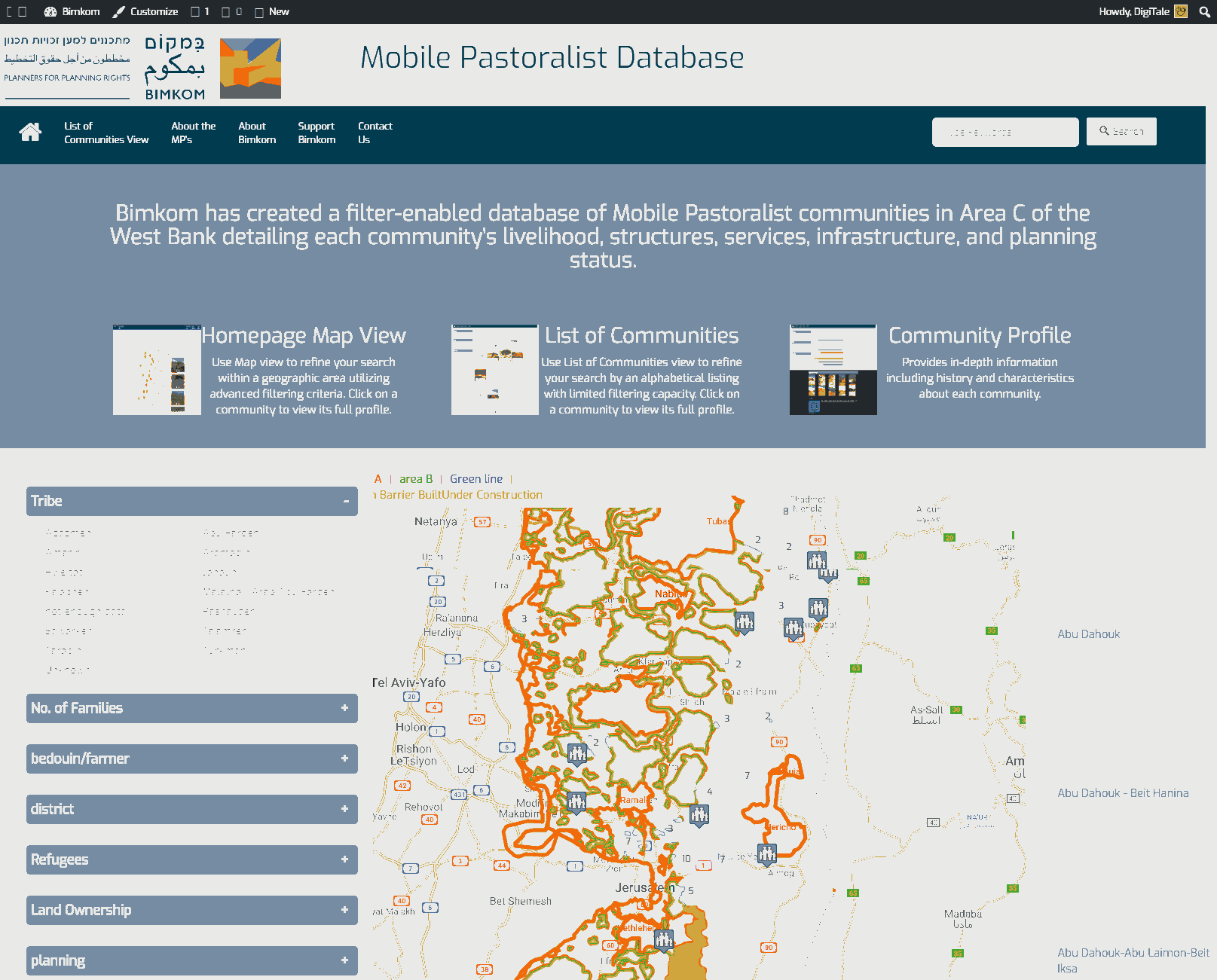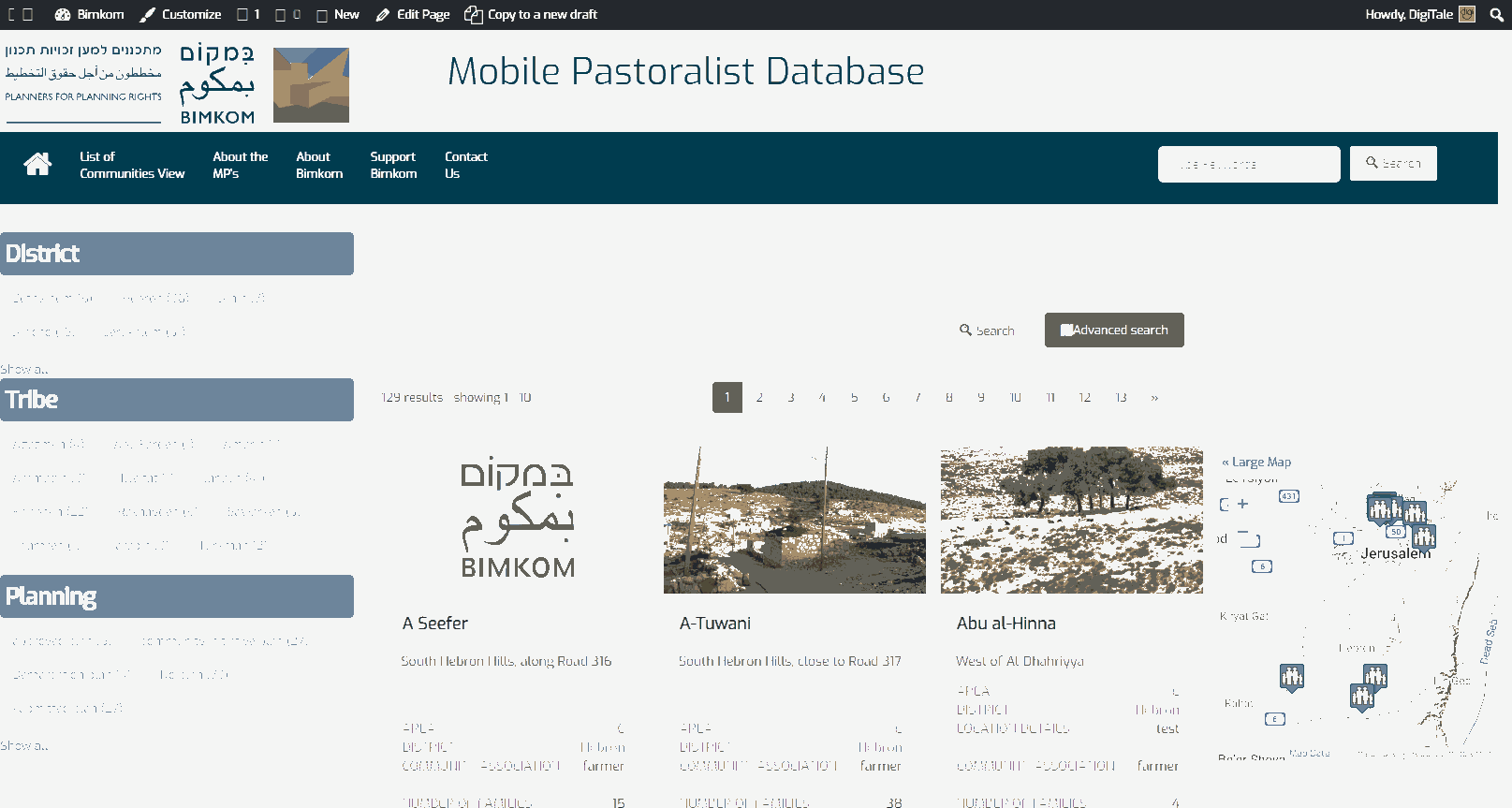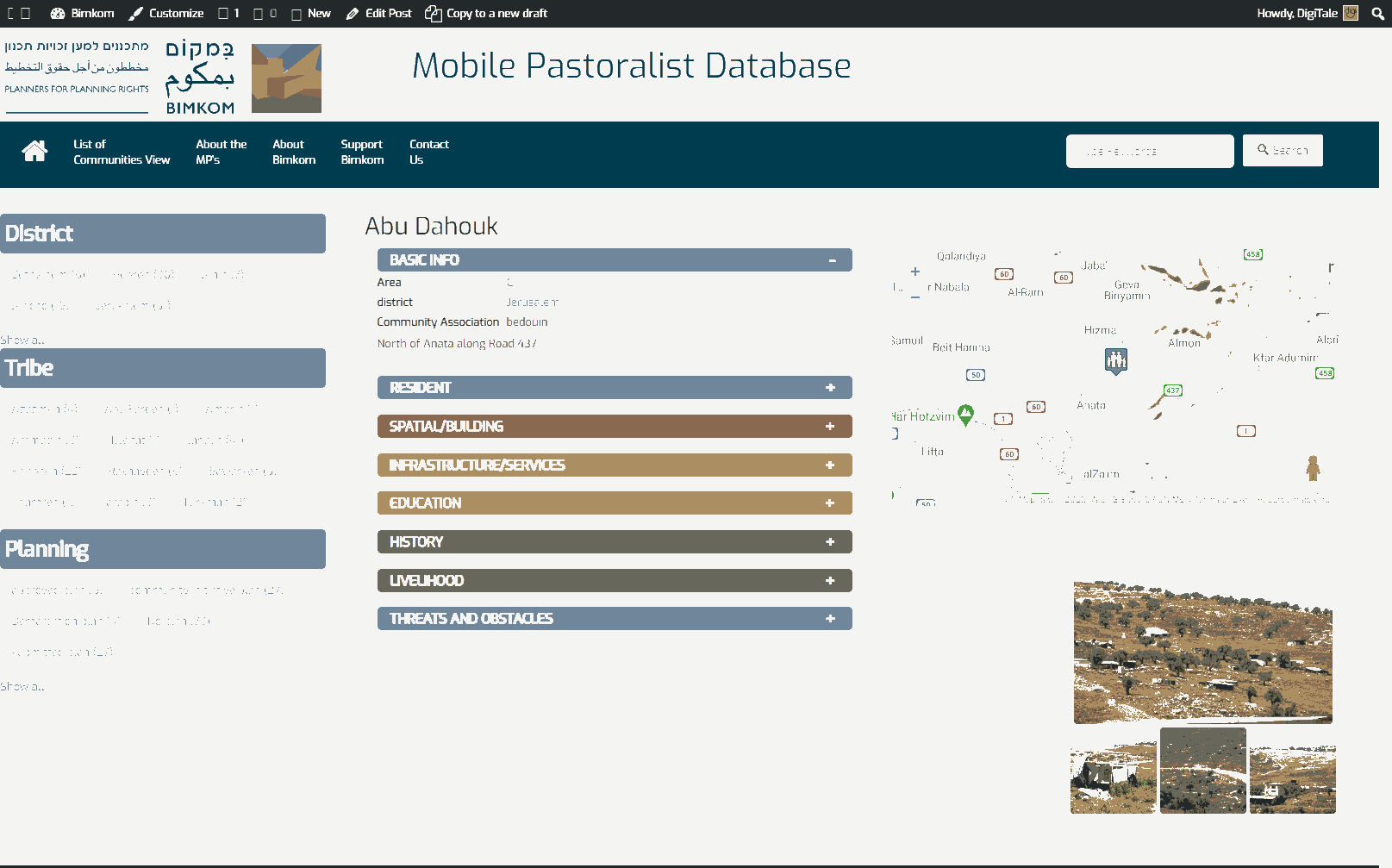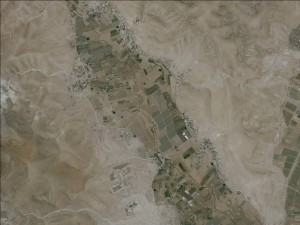Jordan Valley
Jiftlik Abu Ajaj
Resident
Refugees
- not refugee
- official refugee status
- non-official refugee status
Spatial/Building
Land Ownership
- private
- lease
- state owned land
Land Ownership - details
Most of the lands belong to families from Nablus
Planning
submitted plan
Planning - details
An old version of the plan for Al Jiftlik that was submitted in 2010 included the area of Abu al Ajaj as well. However, according to restrictions from the ICA the area of Abu al Ajaj was excluded from the latest version of the plan.
Structure Type
- tent
- tin shack
Infrastructure/Services
Access to Community
private vehicle
Water Access
- water tank
- connection to neighboring village
Electric Connection - details
The surrounding communities are connected to electricity but the community of Abu Ajaj is not, since its lands are not within the approved plan.
Health Care
- permanent clinic in community
- clinic in distant town/village
Health Care - details
Severe cases are treated in Jericho and Nablus
Education
Location of School #1
Jiftlik
general description [school #1]
- Boys
- Girls
- Primary school
Location of School #2
Jiftlik
general description [school #2]
- Boys
- Girls
- Middle school
- High School
Accessibility to school [school #1]
3
History
History
The community is comprised of Bedouins who were expelled from Be'er Sheva after 1948 and farmers. In 1948 a refugee camp was established in the area. After 1967 the camp was destroyed and its inhabitants were displaced.
livelihood
Seasonal Movement
yes
Seasonal Movement - details
Parts of the farmers in the community leave at the end of the agricultural season
Other Occupation
- shepherding
- agriculture
Main Occupation
- shepherding
- agriculture
Threats and obstacles
Threats and Obstacles
fjfxjsfjsyjsyj
- firing zone/closed military zone
- close to settlement
Threats and Obstacles - details
Jiftlik is comprised of 5 communities, one of them- Abu Ajaj- is has been declared as inside the closed military zone, and therefore does not receive any services and is under constant threat of demolition.
The surrounding settlements restrict their agricultural lands and their water supply for their lands.
The head of the community tells that at some nights the IDF uses the area as training ground and then all families are taken out of their homes and guarded by soldiers.
The surrounding settlements restrict their agricultural lands and their water supply for their lands.
The head of the community tells that at some nights the IDF uses the area as training ground and then all families are taken out of their homes and guarded by soldiers.
Number of Demolition Orders
318
Number of Demolitions
115
Demolitions - date of update
September 17, 2010
Demolitions - details
The number of demolition orders and actual demolitions relates to the all Jiftlik area and not just to the Abu al Ajaj community.
According to residents, in 2014, 55 structures for housing and livestock were demolished
According to residents, in 2014, 55 structures for housing and livestock were demolished




